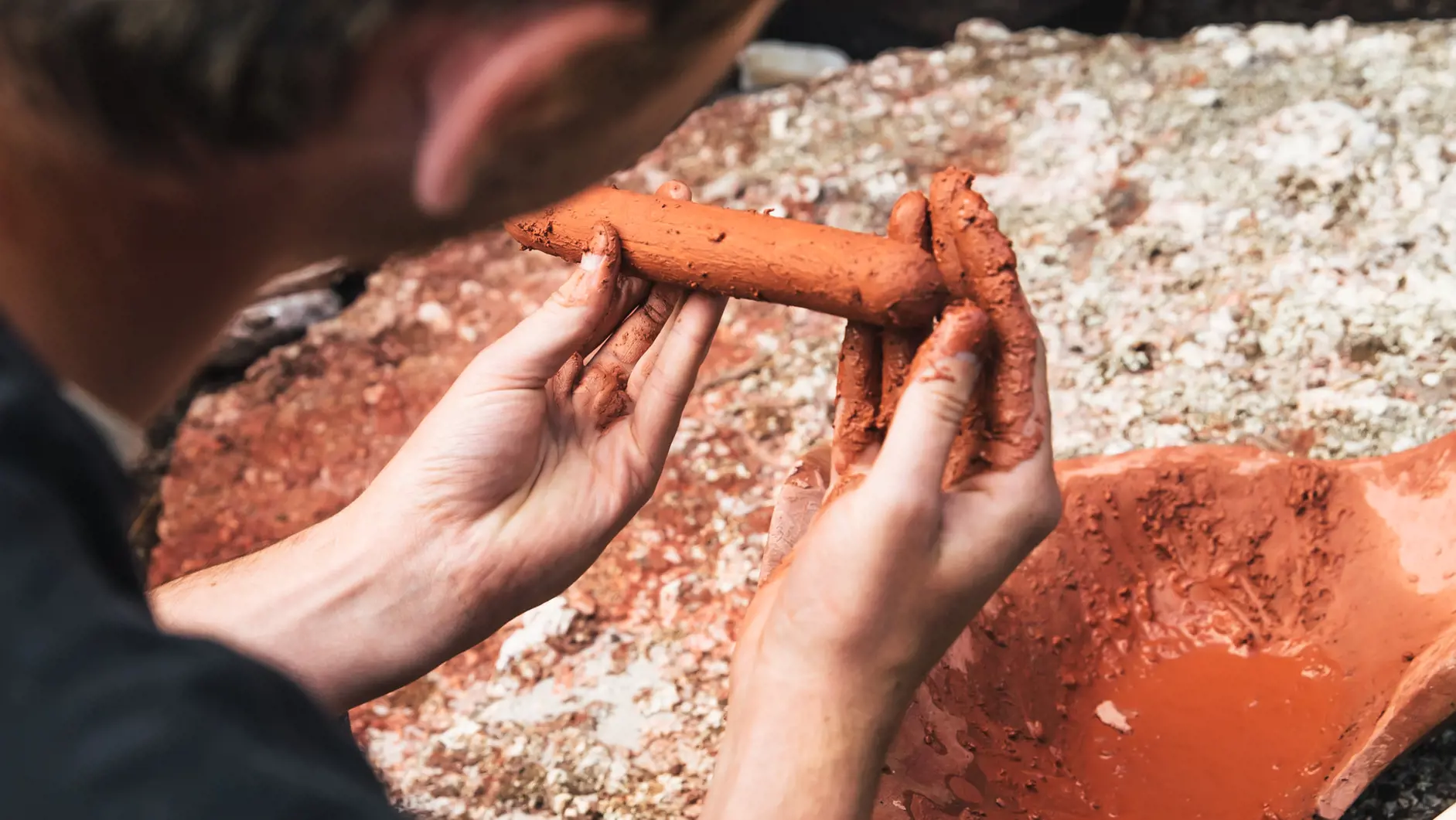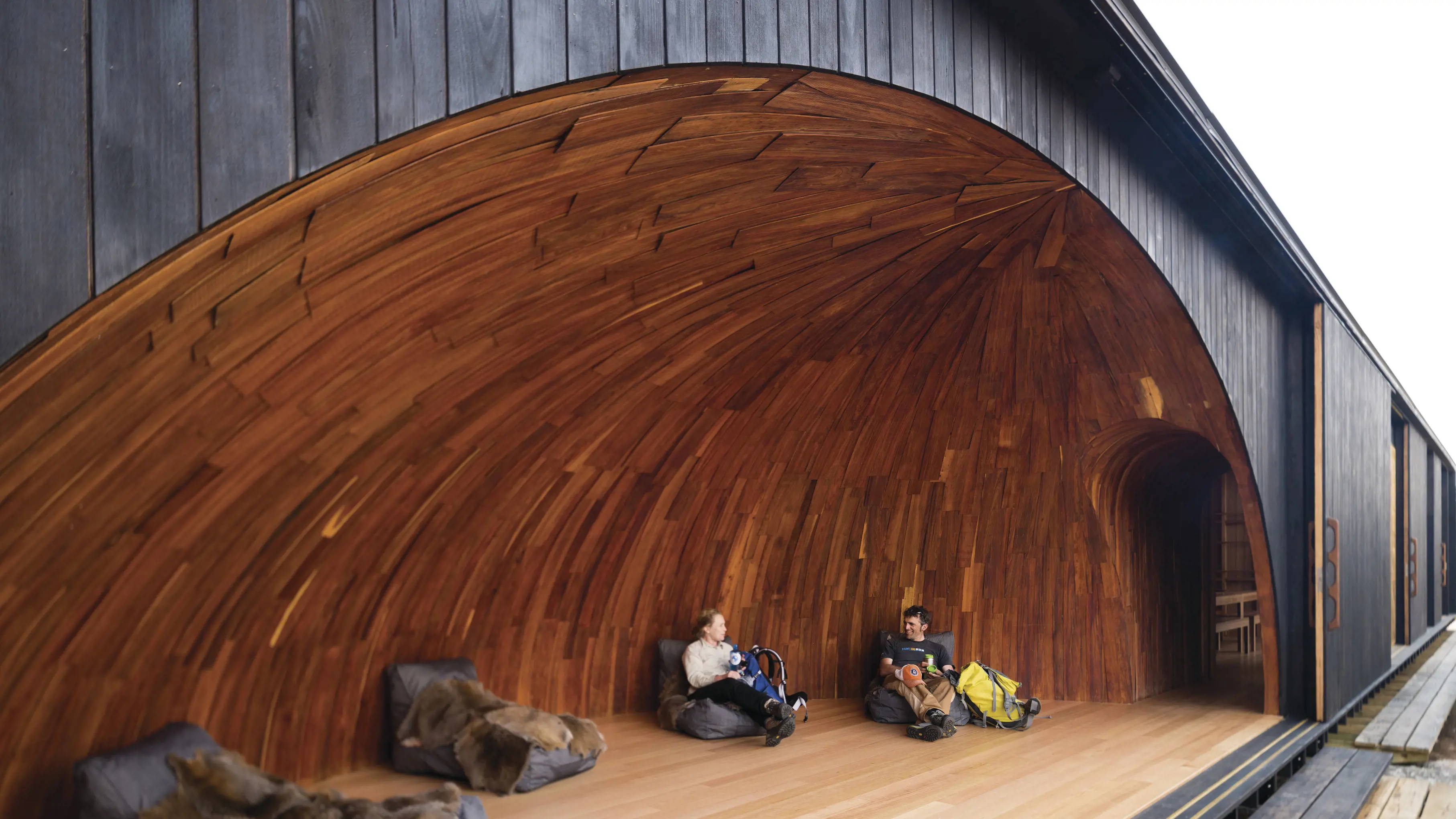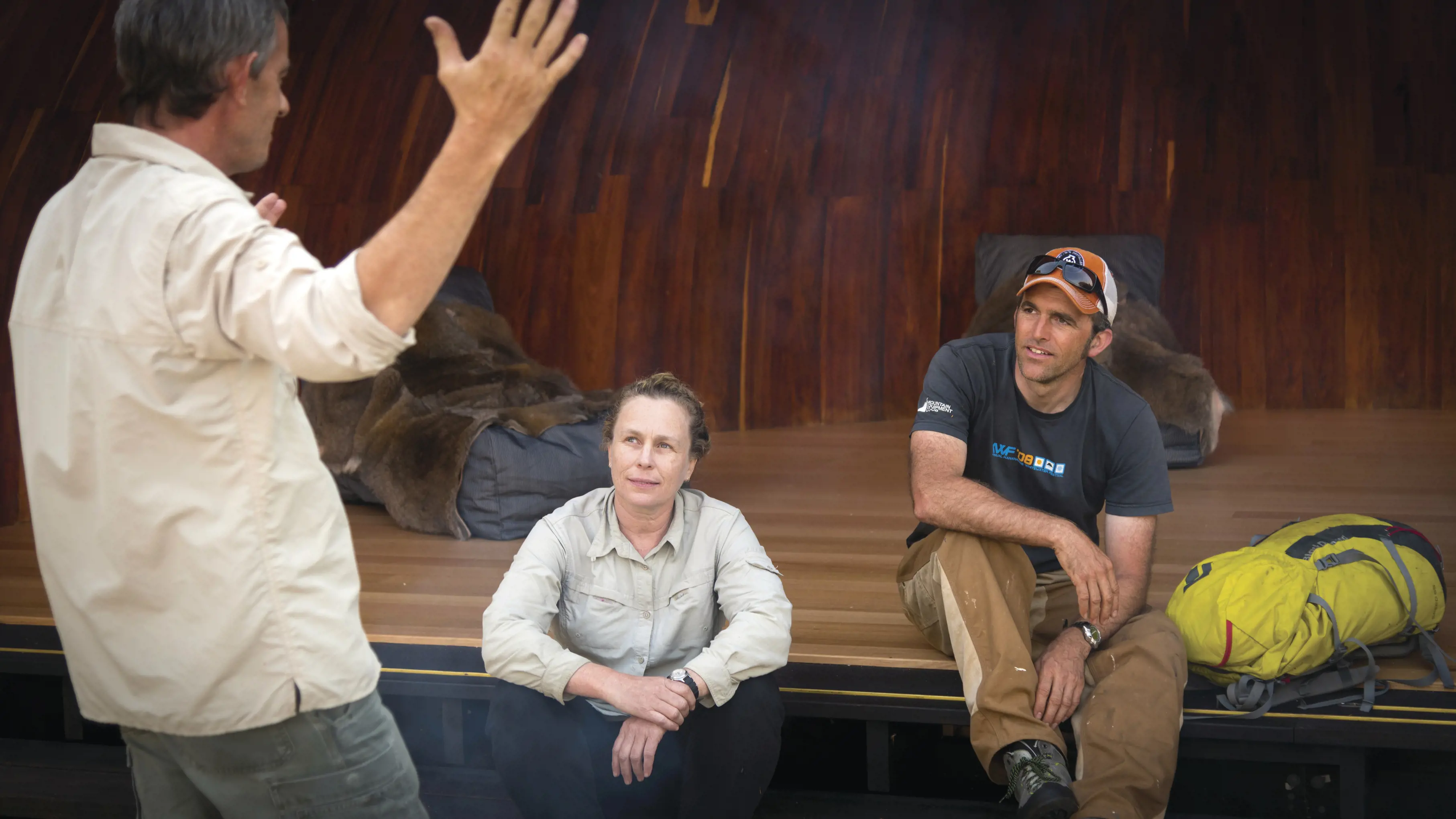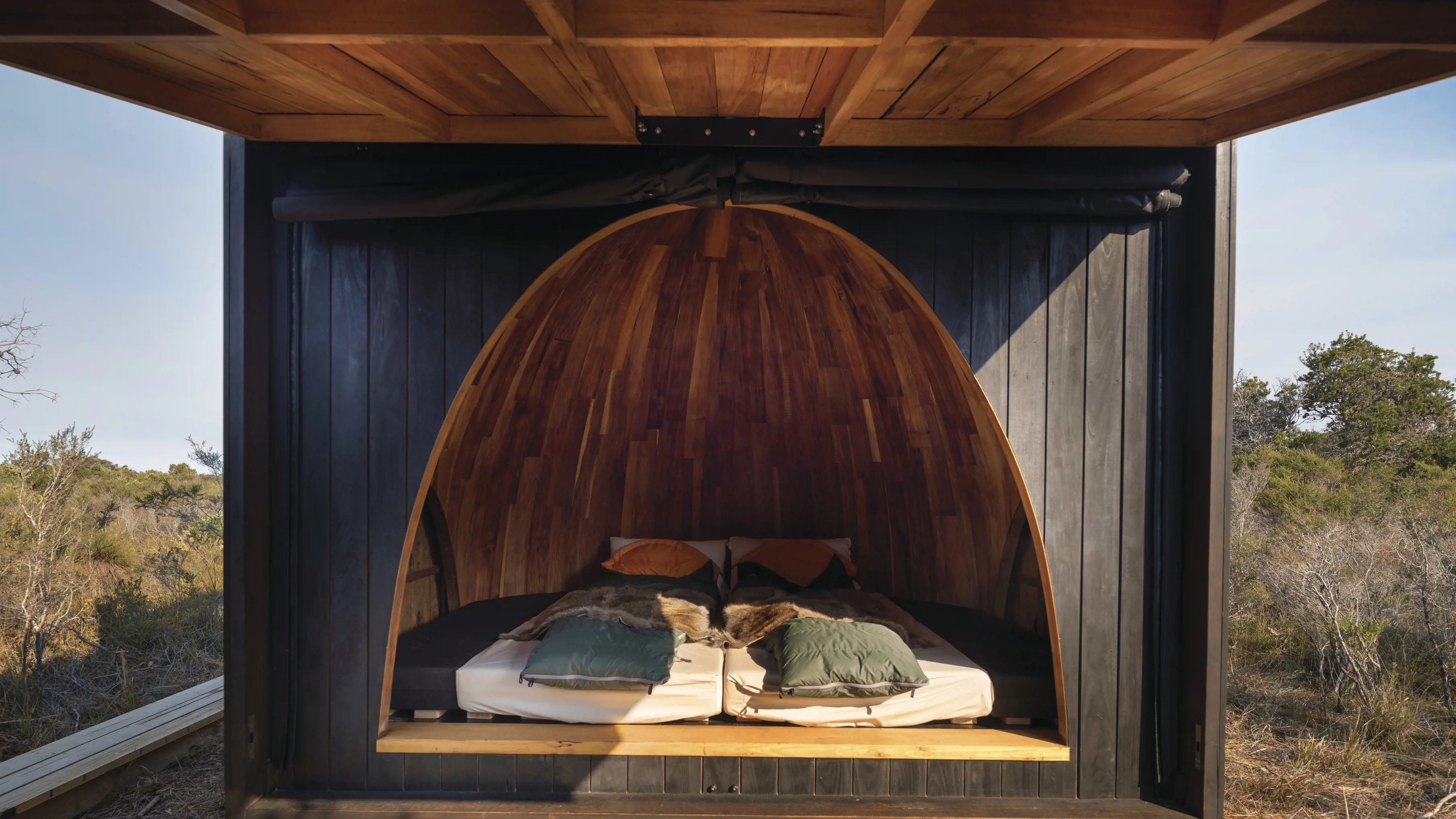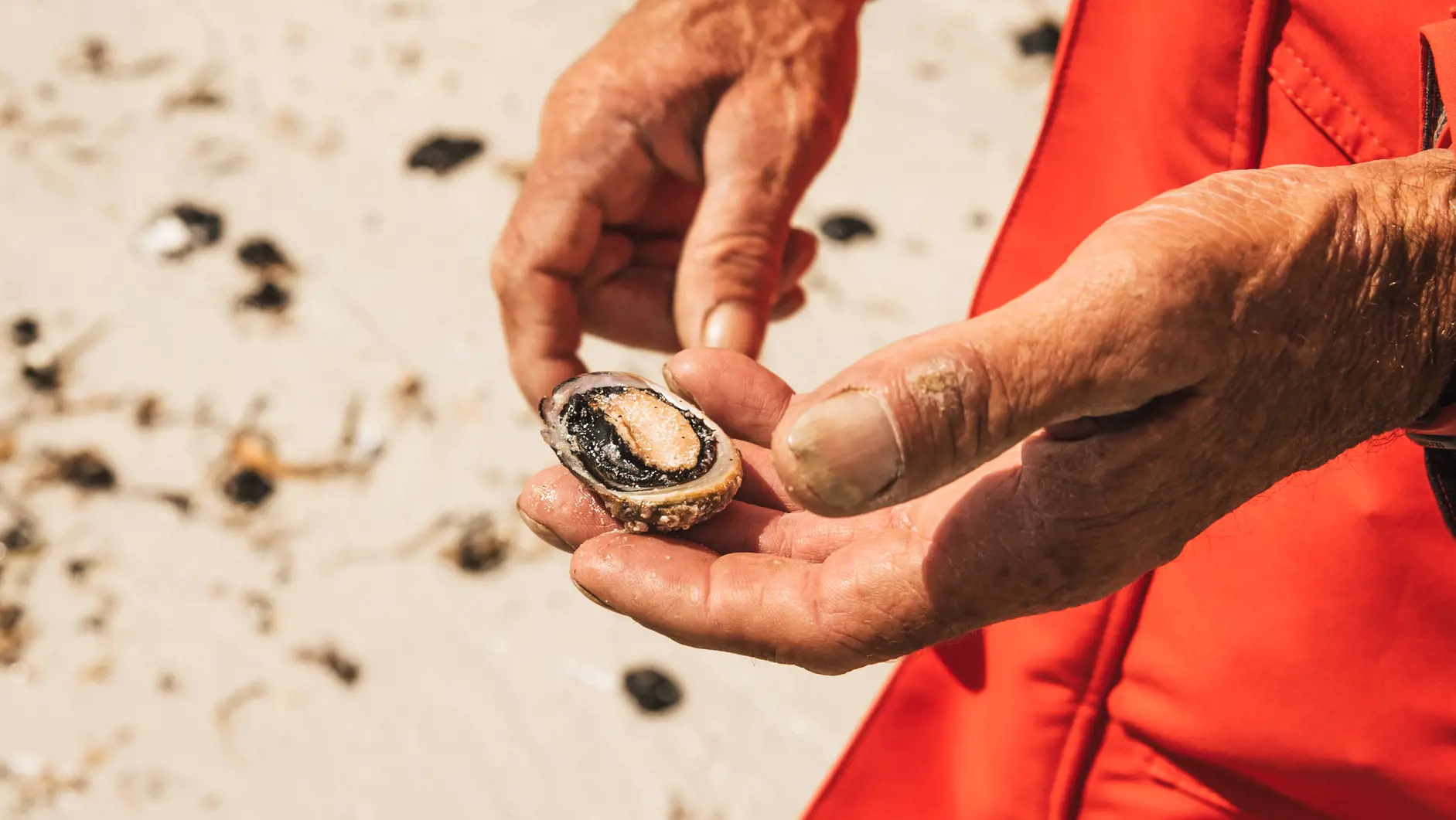The chances to participate in Tasmanian Aboriginal owned and led experiences are growing.
Travellers now have the opportunity to learn more about First Peoples’ connection to country, stories, knowledge and enduring culture.
In the dunes and beaches along Tasmania’s larapuna / Bay of Fires area, around the Bay of Fires, for instance, the land seems almost to speak.
Aboriginal cultural living sites rise as sand dunes, and depressions in the land tell of shelters once used by Tasmanian Aboriginal people.
For Carleeta Thomas, head guide of the Tasmanian Aboriginal owned and led wukalina Walk, these important sites double as ways to share culture and country with travellers.
“It’s a really special place for our community,” Thomas says. “That north-east part of lutruwita (Tasmania) is our ancestral homeland, where our old fellas like Mannalargenna descend from.
“I feel really proud and honoured to be able to be a part of something that’s grown to what wukalina Walk is, and to have found a deeper understanding of community and culture myself. To be able to share that with non-Indigenous people is really awesome for me.”
On the four-day guided wukalina Walk, guests climb to the low summit of wukalina (Mount William) and walk the larapuna / Bay of Fires coastline to Eddystone Point, staying in a camp with timber pods built in the shape of ancient Aboriginal huts, and discovering connections between the land and people.
Traditional bush foods
Proud palawa woman Kitana Mansell knows all about traditional Tasmanian Aboriginal bush tucker. Based in Hobart, Mansell runs palawa kipli, a catering company bringing people together to enjoy a modern take on traditional palawa foods (in palawa kani, the Tasmanian Aboriginal language, ‘palawa’ means Tasmanian Aboriginal, and ‘kipli’ means food).
Mansell also runs public kipli takara tours – 90min bush-food walks with palawa guides across culturally significant lands at Risdon Cove. Walking alongside Mansell, visitors find, smell, touch and taste native bush foods: cunnigong, kunzea; wattle seed, kangaroo apple, native clover... These foods are growing all around Tasmania – a largely unknown, underutilised and sustainable resource.
Mansell and her team then get busy cooking – bringing in other traditional foods such as mutton bird, wallaby, duck egg, possum, oysters and seaweed – to create a unique native finger-food tasting, or a private sit-down cultural dining experience of high-end bush tucker.
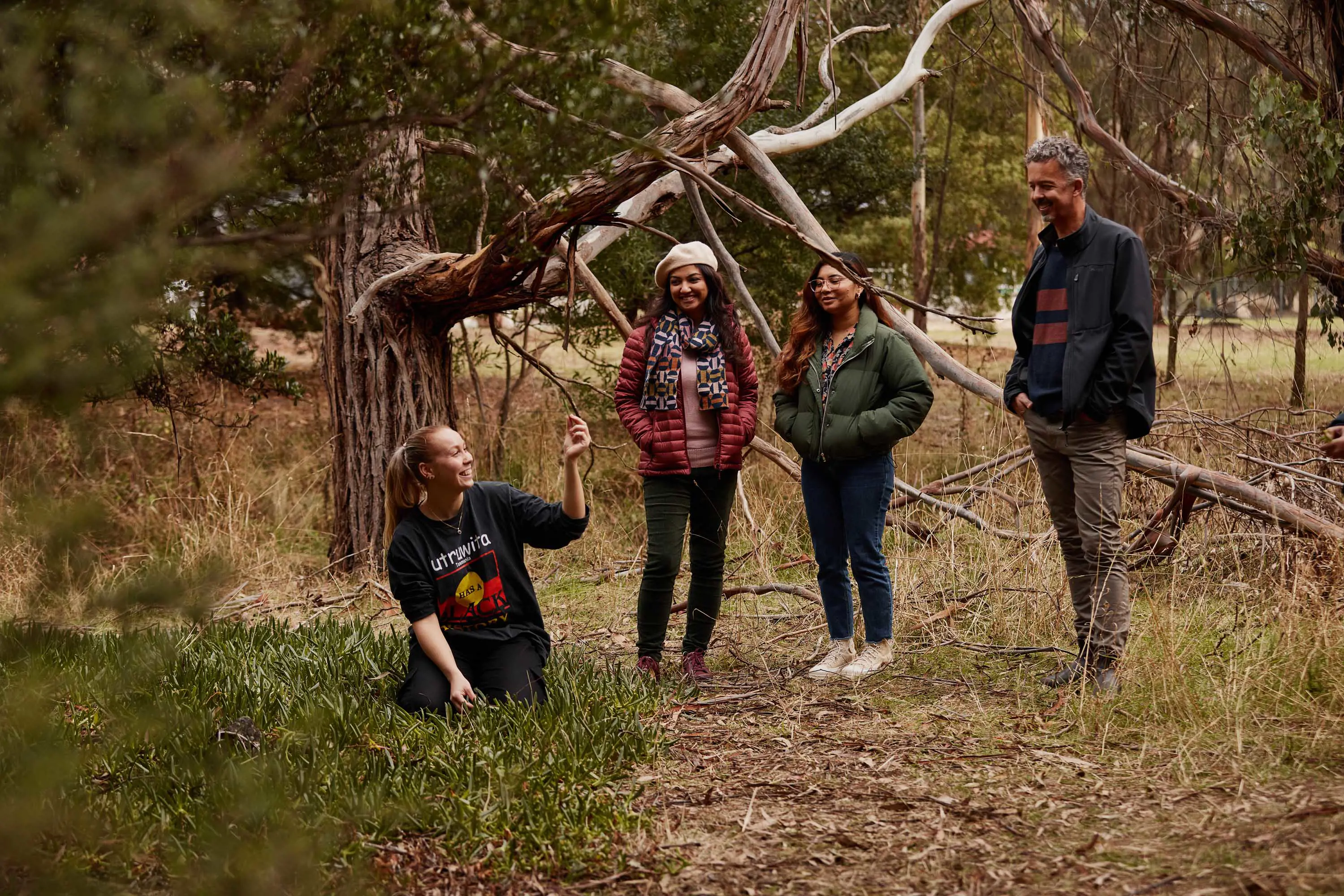
City and gorge
In Hobart, takara nipaluna is a walking tour that traces the route taken by 40 members of the Aboriginal resistance as they walked to the old Government House to negotiate an end to the Black War in 1832. This war was a period of violent conflict between European settlers and Tasmanian Aboriginal people through the 1820s and early 1830s.
Created and delivered by palawa and warlpiri woman Nunami Sculthorpe-Green, takara nipaluna takes guests on a 90min walk along the waterfront and through Hobart - known as nipaluna in palawa kani, the revived Tasmanian Aboriginal language - telling the city’s story from an Aboriginal perspective for the first time.
In Launceston, kooparoona niara Tours runs cultural tours into Cataract Gorge, with trawlwoolway man Greg Murray exploring the significance of the gorge. The half-day kooparoona niara Cultural Tour includes a healing circle and a visit to another deep gorge at Tulampanga (Alum Cliffs), a place of immense significance as the meeting place of three Aboriginal nations.
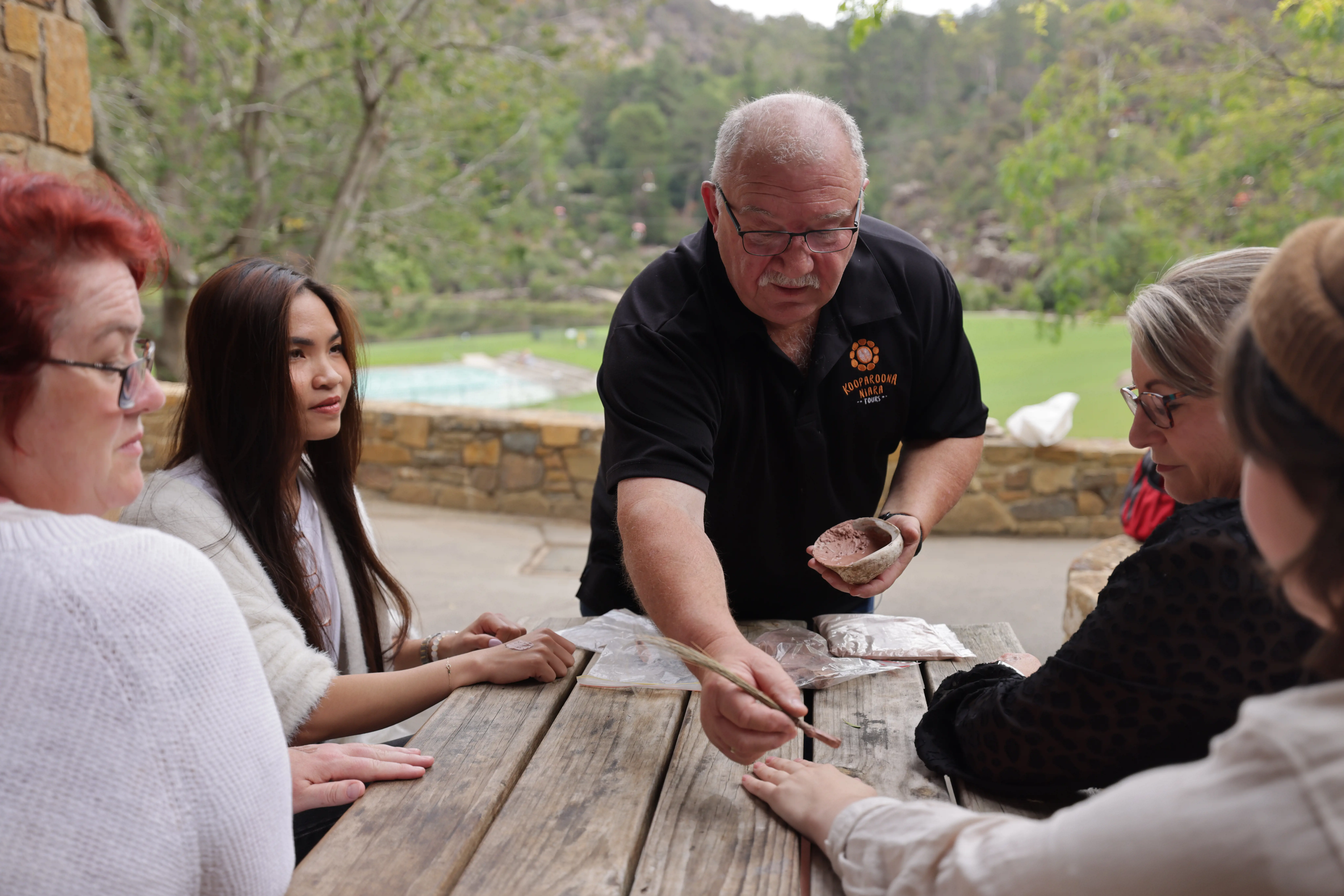
Cultural galleries and experiences
Other ways to connect with Tasmanian Aboriginal culture and history include a visit to ningina tunapri, the Tasmanian Aboriginal cultural gallery at the Tasmanian Museum and Art Gallery (TMAG) in Hobart. Ningina tunapri means “to give knowledge and understanding” and the gallery gives visitors the chance to develop a deeper appreciation of Tasmanian Aboriginal culture. Central to the display is tuylini, a stringybark canoe built by a group of pakana Tasmanian Aboriginal men in 2007 to revive the skills and knowledge of their ancestors.
The First Tasmanians exhibition at Launceston’s Queen Victoria Museum and Art Gallery (QVMAG) includes rarely seen original objects and features Tasmanian Aboriginal perspectives on topics such as climate change, astronomy, technology and architecture, as well as stories of creation.
Understanding and insight
Reminders of the violence inflicted on Tasmanian Aboriginal people since European settlement are poignant places for reflection. The Truganini Lookout on The Neck at Bruny Island features a memorial to Truganini, the Nuenonne woman widely but incorrectly known as the last Tasmanian Aboriginal after her death in 1876.
The Tasmanian Aboriginal community remains proud and thriving. A visit to Tasmania today can be about discovering the island’s First Peoples’ culture, as witnessed during experiences such as the wukalina Walk.
“I think people get an understanding and an insight into our community,” Thomas says. “People get a whole new understanding of the landscape after a trip. They might have been to larapuna / Bay of Fires before, but they hadn’t realised the depth of the history in that landscape. They get a whole new understanding of what they can gain from country.”
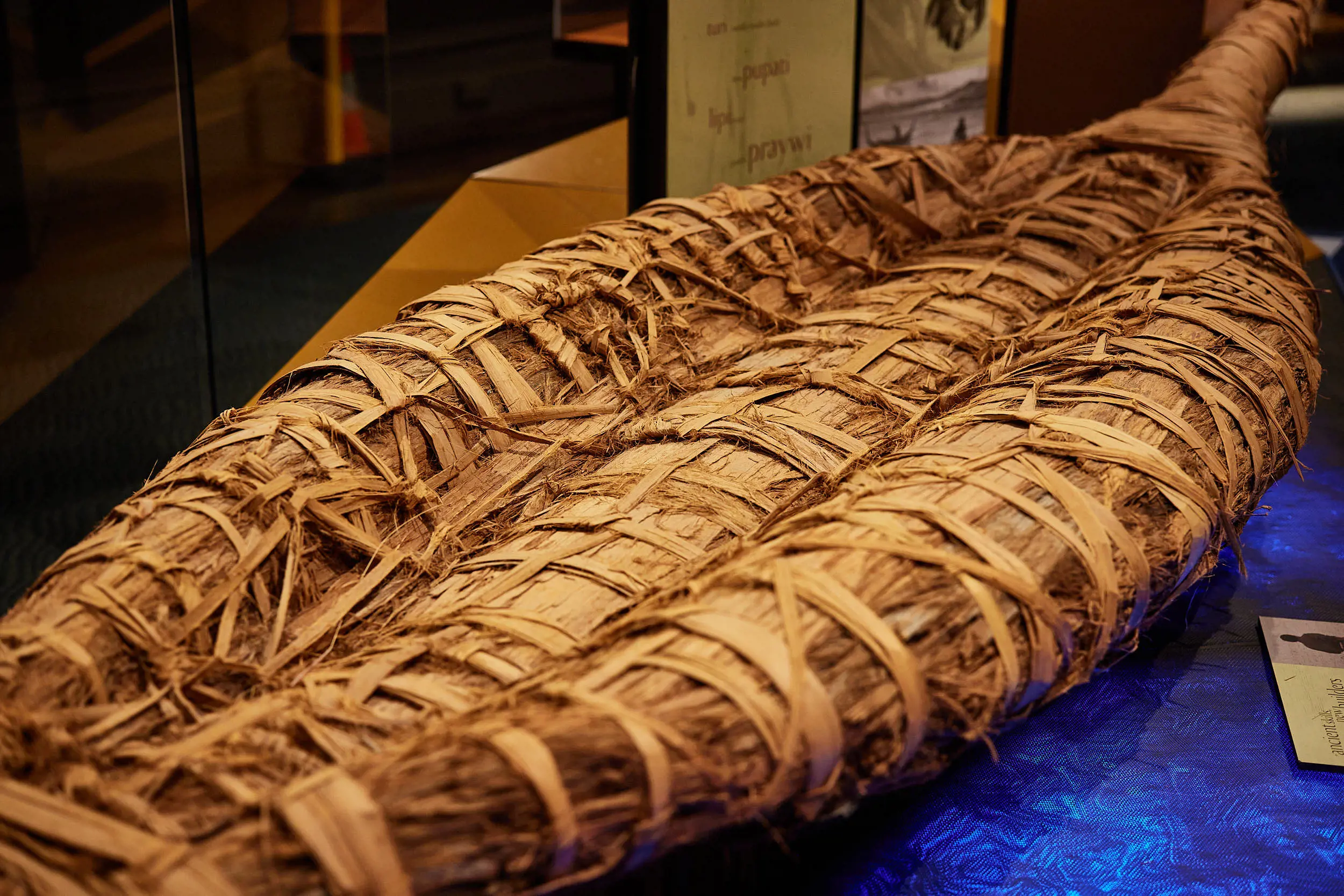
Tuylini, Stringybark Canoe, Tasmanian Museum and Art Gallery
